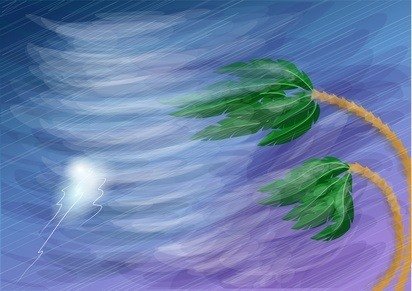The Science Behind Summer Thunderstorms in Florida.
 Although we don’t like to refer to it as a monsoon, particularly in the Summer months, the Florida peninsula experiences what other parts of the world would consider a monsoon weather pattern.
Although we don’t like to refer to it as a monsoon, particularly in the Summer months, the Florida peninsula experiences what other parts of the world would consider a monsoon weather pattern.
What this means for Florida is that instead of typical terms like “summer” and “winter”, we have more of a “dry season” and a “rainy season” (in that order). Frequented by afternoon thunderstorms, summer or “rainy season” in Florida usually means we can count on rain nearly every day and usually around the same time every day.
According to the National Oceanic and Atmospheric Administration (NOAA) National Weather Service, approximately 1,800 thunderstorms are occurring at any given time, resulting in about 16-million thunderstorms each year. Most thunderstorms last about 30 minutes and are typically about 15 miles (24 km) in diameter. The two biggest threats associated with most thunderstorms are lightning and flash floods. To understand why thunderstorms occur more often during the warm months requires some understanding of thunderstorm basics.
Three basic ingredients are required for a thunderstorm to form: moisture, rising unstable air (air that keeps rising when given a nudge), and a lifting mechanism to provide the “nudge.”
The sun heats the surface of the earth, which warms the air above it. If this warm surface air is forced to rise—hills or mountains, or areas where warm/cold or wet/dry air bump together can cause rising motion—it will continue to rise as long as it weighs less and stays warmer than the air around it.
As the air rises, it transfers heat from the surface of the earth to the upper levels of the atmosphere (the process of convection). The water vapor it contains begins to cool, releases the heat, condenses and forms a cloud. The cloud eventually grows upward into areas where the temperature is below freezing.
As a storm rises into freezing air, different types of ice particles can be created from freezing liquid drops. The ice particles can grow by condensing vapor (like frost) and by collecting smaller liquid drops that haven't frozen yet (a state called "supercooled"). When two ice particles collide, they usually bounce off each other, but one particle can rip off a little bit of ice from the other one and grab some electric charge. Lots of these collisions build up big regions of electric charges to cause a bolt of lightning, which creates the sound waves we hear as thunder.
According to Florida Climate Center, Florida State University, Virtually all summer rainstorms are accompanied by thunder and lighting. No other part of the nation has more thunderstorm activity than Florida. In the western half of the peninsula in a typical year, there are over 80 days with thunder and lightning. Central Florida's frequency of summer thunderstorms equals that of the world's maximum thunderstorm areas: Lake Victoria region of equatorial Africa and the middle of the Amazon basin. The Amazon and east African areas maintain their frequency of thunderstorm activity throughout most of the year, whereas the number of thunderstorms in Florida drops off sharply in the fall and does not pick back up until spring.




